Are you looking for an alternative to oat fiber in your baking and cooking recipes? If so, you’ve come to the right place!
In this blog post, we’ll explore the advantages of using a substitute for oat fiber.
We’ll discuss what ingredients can be substitutes that provide similar health benefits, such as improved texture and increased dietary fiber intake.
Additionally, we will explore how adding certain substitutions can also reduce production costs while still adhering to quality guidelines.
What Is Oat Fiber?
Oat fiber is a dietary fiber derived from oats and has several potential health benefits.
Oat fiber also contains important vitamins, minerals, antioxidants, and other compounds.
It is high in both soluble and insoluble fiber, which can help to reduce cholesterol levels and regulate blood sugar levels.
In cooking, oat fiber can be used to increase the nutritional content of meals and add texture to baked goods.
It can also be incorporated into smoothies, oatmeal, or other recipes for an added boost of fiber.
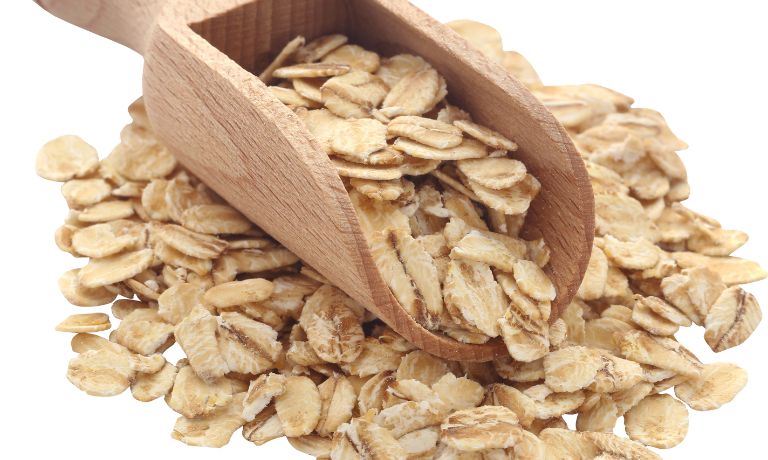
Substitutes For Oat Fiber
Oat fiber can be replaced by other sources of dietary fiber that can provide similar health benefits. These include:
Almond Flour
Almond flour is a finely ground almond meal made from blanched almonds that have had their skins removed.
It is a popular substitute for oat fiber because it has a mild nutty flavor, and contains healthy fats and proteins.
Almond flour is high in dietary fiber. It also contains various essential vitamins and minerals, including calcium, magnesium, potassium, iron and zinc.
Almond flour is an excellent source of heart-healthy monounsaturated fats that can help reduce bad cholesterol levels.
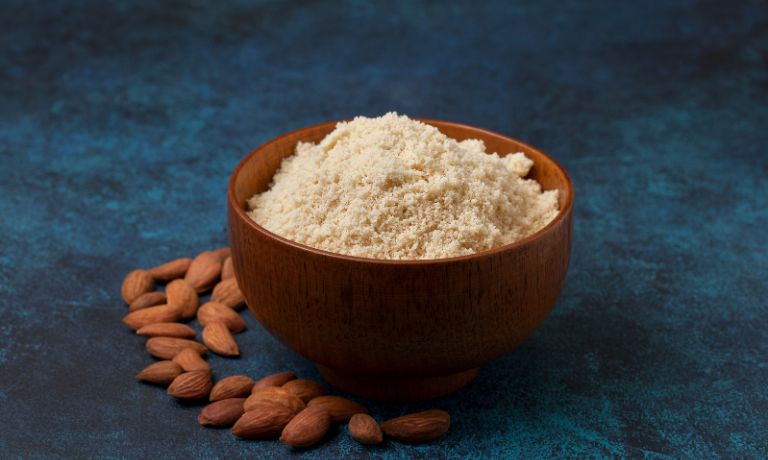
Coconut Flour
Coconut flour is a healthful, gluten-free alternative to oat fiber.
It is made from finely ground dried coconut meat and contains no wheat or grains.
Coconut flour is rich in dietary fiber, which helps promote fullness and supports regularity.
Additionally, coconut flour has several key vitamins and minerals, including iron, calcium, potassium and magnesium.
It can also thicken sauces, smoothies, pancakes and muffins while adding healthy nutrients.
This flour can be used in recipes as a substitute for oat fiber, helping to give baked goods a sweet and nutty flavor.
Coconut flour does not need to be pre-cooked and should always be added slowly to recipes.
When substituting for oat fiber, note that coconut flour absorbs a lot more liquid than other flours, so additional eggs or liquids may need to be added for the best results.
Additionally, because of its dense nature, coconut flour often requires double the amount of baking powder in a recipe.

Lupin Flour
Lupin Flour is a lesser-known flour substitute made from lupin beans.
It has recently become increasingly popular due to its high protein and fiber content.
Lupin flour is low in carbohydrates, making it suitable for those on a carbohydrate-restricted diet.
It has a mild nutty flavor and works well in many baked goods, such as bread, muffins and cakes.
Lupin flour also contains high amounts of essential vitamins and minerals like iron, calcium and magnesium.
When using lupin flour as an alternative to oat fiber, it is important to note that the texture may be a bit different.
Lupin flour is slightly dense and has a slightly gritty texture, which can result in a denser end product when baking.
It also absorbs more liquid than oat fiber, so adjust the amount of liquid used in recipes when substituting lupin flour for oat fiber.
Additionally, small amounts of lupin flour can be added to recipes with other flours to increase the fiber content without drastically altering the texture or flavor.
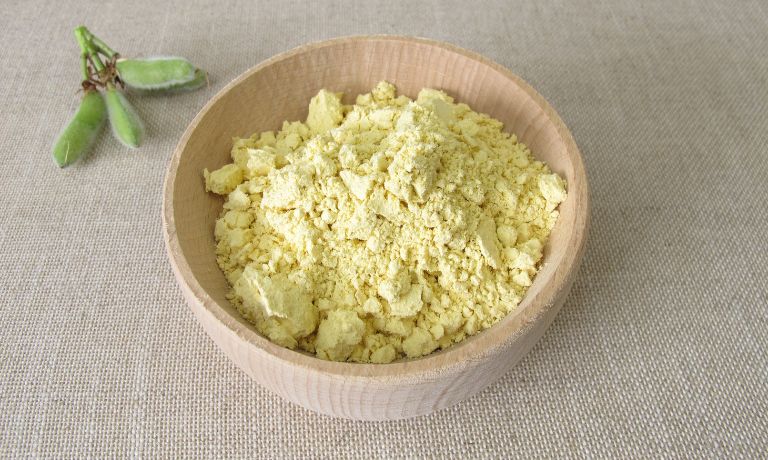
Psyllium Husk
Psyllium husk, also known as ispaghula, is a dietary fiber made from the outer coating of the Plantago ovata plant’s seeds.
It’s mostly composed of soluble fiber, which absorbs water and forms a gel-like substance.
Psyllium husk is a great substitute for oat fiber as it has similar properties when added to food products.
It helps improve the texture of baked goods by adding bulk and helping them hold their shape.
When added to recipes, it helps retain moisture and can be used as a binder or thickener.
It’s often used in bread, muffins, pancakes, cookies and other baked goods.
Unlike oat fiber, which can impart a gritty texture if too much is added to a recipe, psyllium husk doesn’t have this issue.
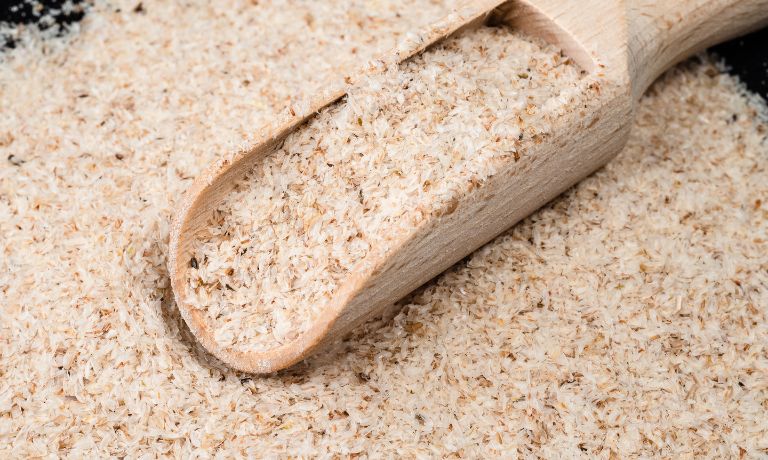
Chia Seeds
Chia seeds are small, oval-shaped, and typically black or white in color. These tiny seeds are a powerhouse of nutrition.
Chia is from the Salvia hispanica plant and dates back to pre-Columbian Aztec and Mayan cultures who used it for food and medicinal purposes.
Chia seeds are rich in dietary fiber, protein, minerals and essential fatty acids such as Omega 3s.
This makes them a great alternative to oat fiber for those looking to add more nutrition to their diet.
Chia is also low in calories, making it an excellent addition to any meal or snack.
Chia can be added to smoothies, oatmeal, baked goods, and salads.
It can also be used to make chia pudding, sprouts or a topping for yogurt or avocado toast.
Chia is often sold in whole seed form but can be ground into flour or pressed into oil.

Flaxseed Meal
Flaxseed meal is a fiber-rich byproduct of flaxseeds. It’s finely ground and can be used as an alternative to oat fiber in many recipes.
Flaxseed meal has a nutty flavor that works well in baking applications, such as crackers, bread, muffins, and cookies.
Unlike oat fiber derived from oats, flaxseed meal is an excellent source of omega-3 fatty acids.
To substitute, replace part or all of the oat fiber with an equal amount of flaxseed meal.
Remember that this substitution will slightly change the flavor and texture of your dish, so it is best to experiment to find the right balance for your recipe.
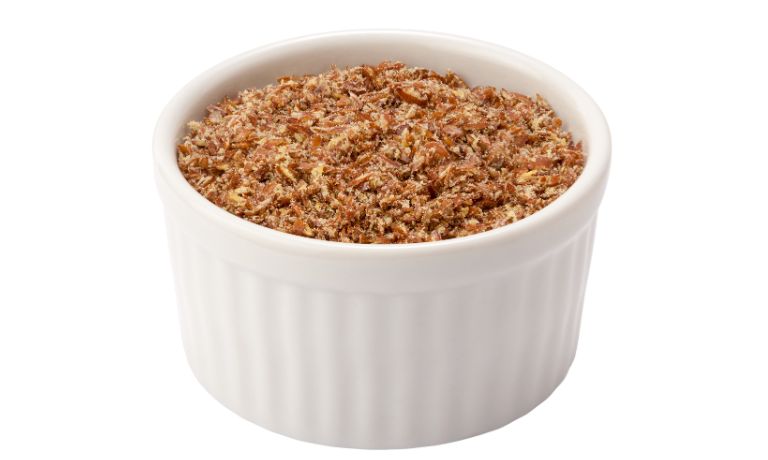
Wheat Bran
Wheat bran is the outer layer of the wheat kernel (or grain), containing fiber, vitamins, minerals, proteins and carbohydrates.
It can be used as a substitute for oat fiber due to its similar nutritional content.
Wheat bran is a good source of dietary fiber, which helps to promote digestive health and regularity.
Wheat bran contains essential vitamins and minerals, such as magnesium, potassium, vitamin B6, zinc and iron.
Furthermore, it is a good source of proteins and carbohydrates for energy and muscle building.
Wheat bran can be used in various ways – from baking to adding to smoothies or cereals.

FAQs
Is It Possible To Replace Oat Fiber With Flour?
Yes, it is possible to replace oat fiber with flour.
Most recipes for oat fiber can be adjusted to use flour instead.
However, the amount of flour needed will vary depending on the recipe and type of flour used.
Can Almond Flour Be Substituted For Oat Fiber?
Yes, almond flour can be substituted for oat fiber in some baking recipes.
However, note that almond flour has a much higher fat content than oat fiber and may not provide the same texture or rise as oat fiber.
Additionally, almond flour is more expensive and may require a different amount of liquid when used as a substitute.
Can Coconut Flour Be Substituted For Oat Fiber?
Yes, coconut flour can be used as a substitution for oat fiber.
However, coconut flour has different nutritional properties than oat fiber and should be used in different amounts when substituting one.
Conclusion
There are several healthy and nutritious alternatives to oat fiber that can be used in baking and cooking.
These substitutes offer various health benefits, such as increased dietary fiber, vitamins, minerals, and essential fatty acids.
Before using any flour or seed substitute for oat fiber in a recipe, consider how the substitution will affect the texture and flavor of the dish.
With experimentation, you can find the perfect combination of substitutes to create a delicious and healthy meal or snack.

